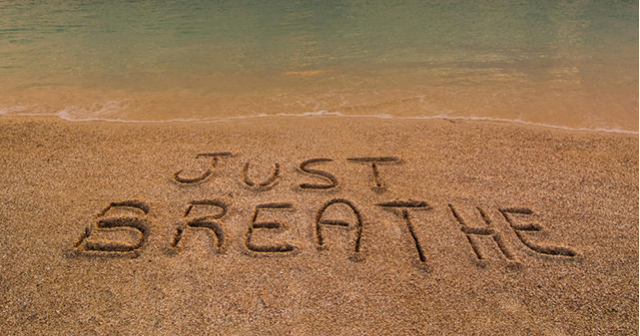Core Breathing Exercise for Freediving
by FII - May 26th
To take full advantage of our inborn aquatic abilities, we need to learn how to use our body in a slightly different way than we might be used to. A great deal of focus in freediving is placed on conditioning the respiratory muscles. When used properly, the goal of some of these exercises is actually to create a permanent change in your physiology in order to become a better freediver.


Changing your body’s physiology and specific training for freediving is the main topic of F.I.I. Level 3 Freediver. Today, let’s take a look at foundation exercise of respiratory muscles conditioning.
Segmented Breathing
An often overlooked, but equally important, exercise for both beginners and intermediate freedivers is segmented breathing. Segmented breathing, also called “pursed breathing,” is an exercise in which a freediver sits in a chair with his or her back shifted all the way to the backrest. The feet are spread apart to the width of the shoulders, and the hands rest on top of the thighs with the palms facing up. Having the eyes closed will promote the relaxed state that is an important part of this exercise.
The inhalation starts with the diaphragm and the diaphragm only. It is very important not to engage any other muscle group during this initial segment. The speed of the inhalation is regulated by restriction of pursed lips. This restriction creates a resistance that a freediver’s diaphragm has to work against. The goal is to inhale as large a volume of air as possible, using just this single muscle. Watch for the tendency of chest expansion, which signifies the use of the intercostals. When this is achieved, the freediver proceeds with a short one-second pause, holding the air with the epiglottis to allow the respiratory muscles to relax (as a reminder of the technique look into F.I.I. Level 2 Freediver manual, chapter Breathing Techniques—Holding the AIr).
The next step is to continue in the restricted inhalation but now by using only the intercostals. Again, it is very important that no other muscle group be involved in this segment. Aiming for inhaling the largest volume possible, while paying attention to possible shoulder movement or developing tension, the freediver fills up the midsection of the lungs. This segment is followed by a one-second pause again, to allow all the respiratory muscles to relax.
The last phase of the inhalation is done without the restriction of pursed lips and therefore occurs quickly. Here, freedivers try to utilize the accessory shoulder respiratory muscles to get even more air into the lungs by performing a dynamic shoulder elevation, immediately followed by shoulder relaxation. This move creates a short “burst” of negative pressure, mainly in the upper portion of a freediver’s lungs, allowing small but still significant amounts of air to top off the nearly full lungs. The key to the success and the aim of this practice is to learn how to utilize the least amount of energy, create the least amount of tension, and be able to release quickly this tension during shoulder respiratory muscles engagement. It is a common beginners mistake to keep the tension (and burn more O2) in the shoulders after utilizing these muscles for inhalation. A freediver follows with a one-second pause in the same fashion as during the previous segments.
The exhalation is executed in the same fashion as during an actual breathe up. Relaxed, passive exhalation with restricted airflow by pursed lips or a tongue pressed against the hard pallet will be slightly longer than the one during breathe up because it starts from full lungs as opposed to only form about one-third of their volume. There should be the usual one-second pause at the end of the exhalation.
Segmented breathing is the ultimate tool in strengthening and stretching your respiratory muscles while gaining a better control over them. This breathing exercise is essential for increasing efficiency and gaining the benefits of a breathe up and peak inhalation. A helpful trick when starting with this exercise is to place one hand on your belly and one hand on your chest. This way when you watch your hands rise and fall, you will have a clear visual and tactile feedback on what respiratory muscles are you using at the time. Another way to help, which perhaps is more suitable for more experienced participants, is the visualization of the inhaled air as white fog, filling the particular segment of your lungs you are working on. The end of each session should be finished with a couple practices of peak inhalation. Your respiratory muscles are nicely warmed up and the nerve pathways between them and the brain are freshly open, which will give you the best opportunity to create and improve the desired muscle memory for their coordination, which is so vital in this technique.
This exercise is not time consuming. Devoting five to ten minutes at a time is enough to start reaping the benefits. It can also be done at any time of the day and nearly anywhere, so there is no real excuse for anyone not to add it to his or her daily life routine. If your dedication is not sufficient to sacrifice five minutes a day, practice it at least from time to time. It will give you some edge. Having healthy and efficient respiratory muscles goes way beyond being a good freediver. You will feel the difference when you play other sports, in your ability to focus, and in your overall well-being and general health.
